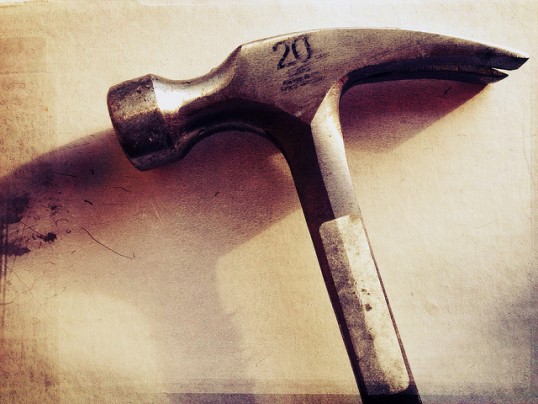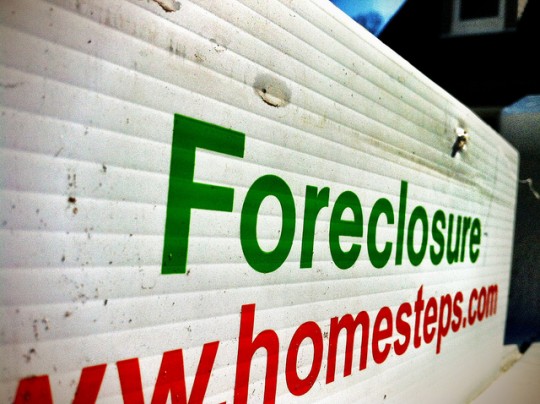Since hitting its recent peak of 58 last August, builder confidence has remained above 50 through the fall and early winter, according to the National Association of Home Builders Housing Market Index. In fact, the index – which measures confidence on a scale where any number above 50 indicates more builders view conditions as good than poor – remained high through January, when it showed a reading of 56. But harsh winter weather took a toll on optimism in February, contributing to an unexpected 10-point drop in the index. Kevin Kelly, NAHB’s chairman, said significant weather conditions across most of the country led to a decline in buyer traffic which, combined with concerns about the availability of skilled workers, developed lots, and building materials, led to the dip in confidence. The results show builders less confident across all three major components of the index, though the components measuring current conditions and future sales expectations remained above 50 despite the declines. More here.
Archive for February 2014
Prices Rise In 97 Of 100 Largest Metro Areas
Trulia’s Price Monitor is the earliest leading indicator of where asking prices are headed on both a national and local basis. The Monitor can detect price trends at least three months in advance of the major sales-price indexes. According to the most recent release, asking prices were up 11.4 percent in January as compared to one year earlier. In fact, of the 100 largest metropolitan areas, 97 saw asking-price increases from January 2013. Prices were also up on a quarterly and monthly basis. The results show a 1.1 percent price increase from December, which is the strongest one-month gain since June 2013. There was also a 2.1 percent improvement in prices on a quarterly basis. However, quarterly increases remain below spring 2013’s rate, when prices accelerated at the fastest pace since the housing crash. Overall, home prices have risen most in the areas that experienced the largest declines during the most recent recession. More here.
Foreclosures Fall For 40th Straight Month
January was the 40th consecutive month of declining foreclosure activity on a year-over-year basis, according to RealtyTrac’s most recent U.S. Foreclosure Market Report. Foreclosure filings – which include default notices, scheduled auctions, and bank repossessions – were down 18 percent from January 2013. Despite the decline, it was the smallest annual decrease since September 2012 and was paired with a month-over-month increase of 8 percent. Daren Blomquist, vice president at RealtyTrac, said the monthly increase in foreclosure activity was somewhat expected after the holiday lull but data from some states shows that many areas are not completely out of the woods when it comes to cleaning up the wreckage of the housing bust. The report found one in every 1,058 housing units had a foreclosure filing in the month of January. More here.
Mortgage Rates, Purchase Demand Both Fall
According to the Mortgage Bankers Association’s Weekly Applications Survey, the average contract interest rate for 30-year fixed rate mortgages fell again last week. It was the fifth consecutive week that mortgage rates have fallen. But despite declining rates, total mortgage loan application volume decreased, dropping 2 percent from the previous week due to a 5 percent dip in the Purchase Index. The Purchase Index, which measures loan requests to buy homes and is a leading indicator of home sales, is now 13 percent below the same week one year ago. Refinance activity, on the other hand, was little changed from the week before. The Refinance Index fell 0.2 percent and the refinance share of total mortgage activity remained unchanged at 62 percent. The MBA’s weekly survey covers more than 75 percent of all U.S. retail residential mortgage applications and has been conducted weekly since 1990. More here.
Mortgage Rates, Purchase Demand Both Fall
According to the Mortgage Bankers Association’s Weekly Applications Survey, the average contract interest rate for 30-year fixed rate mortgages fell again last week. It was the fifth consecutive week that mortgage rates have fallen. But despite declining rates, total mortgage loan application volume decreased, dropping 2 percent from the previous week due to a 5 percent dip in the Purchase Index. The Purchase Index, which measures loan requests to buy homes and is a leading indicator of home sales, is now 13 percent below the same week one year ago. Refinance activity, on the other hand, was little changed from the week before. The Refinance Index fell 0.2 percent and the refinance share of total mortgage activity remained unchanged at 62 percent. The MBA’s weekly survey covers more than 75 percent of all U.S. retail residential mortgage applications and has been conducted weekly since 1990. More here.
65% Of Americans Say Now is The Time To Buy
According to the results of Fannie Mae’s January 2014 National Housing Survey, 65 percent of Americans say now is a good time to buy a house. And, though that number fell 2 percent from the month before, paired with an increasingly positive view of the economy, housing, and mortgage market, it indicates an improvement in Americans’ perception of current economic conditions. In fact, the share of consumers who believe the economy is on the right track was up 8 percent from last month. Also, a majority of participants said they felt it would be easy for them to get a mortgage, the first time in the survey’s three-and-a-half-year history. Doug Duncan, Fannie Mae’s senior vice president and chief economist, said the gradual upward trend in this indicator bodes well for the housing recovery and may be contributing to this month’s increase in the percentage of consumers who said they intend to buy rather than rent their next home. The share of respondents who said they would buy hit an all-time survey high of 70 percent. Conversely, the number who said they would prefer to rent also set a record, falling to a new low of 26 percent. More here.
Gov’t Scorecard Finds Housing Market Progress
The U.S. Department of Housing and Urban Development and the U.S. Treasury recently released the administration’s Housing Scorecard for January 2014. The scorecard, which collects data on the health of the housing market and the administration’s recovery efforts, shows progress in many key areas. According to the latest report, home sales, foreclosure starts, and homeowner equity all saw significant improvement in 2013. Kurt Osowski, HUD’s deputy assistant secretary for economic affairs, said the number of properties which started the foreclosure process fell 33 percent last year, while sales of previously owned homes rose 9.1 percent. With foreclosures down, home sales up, and equity continuing to grow, the housing market continues to make steady progress, Osowski said. In fact, home sales posted their strongest numbers in several years and homeowners’ equity is up $3.4 trillion since the beginning of 2012. Still, officials caution that the economy is still healing, despite the positive trends in the housing market. More here.







